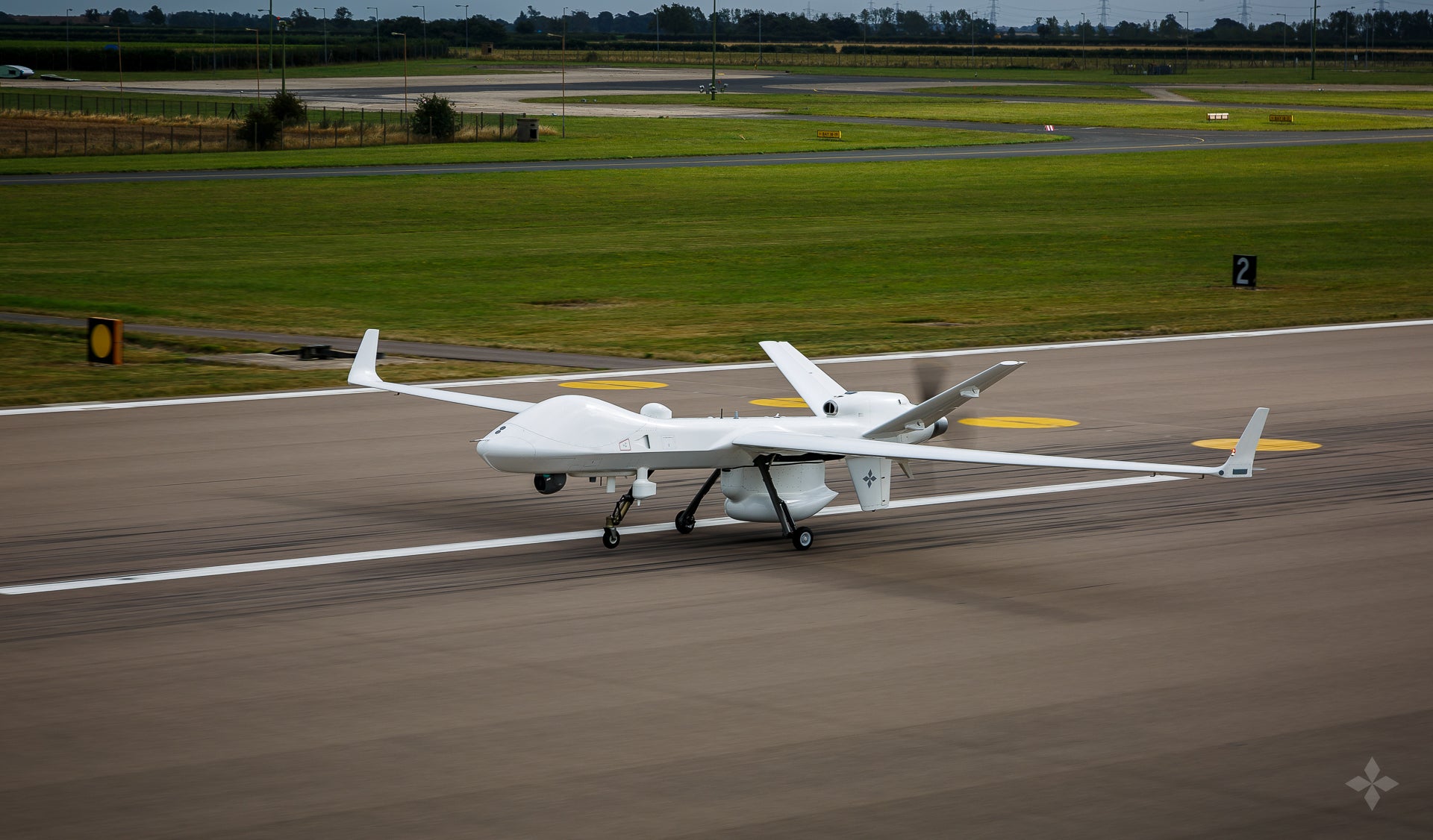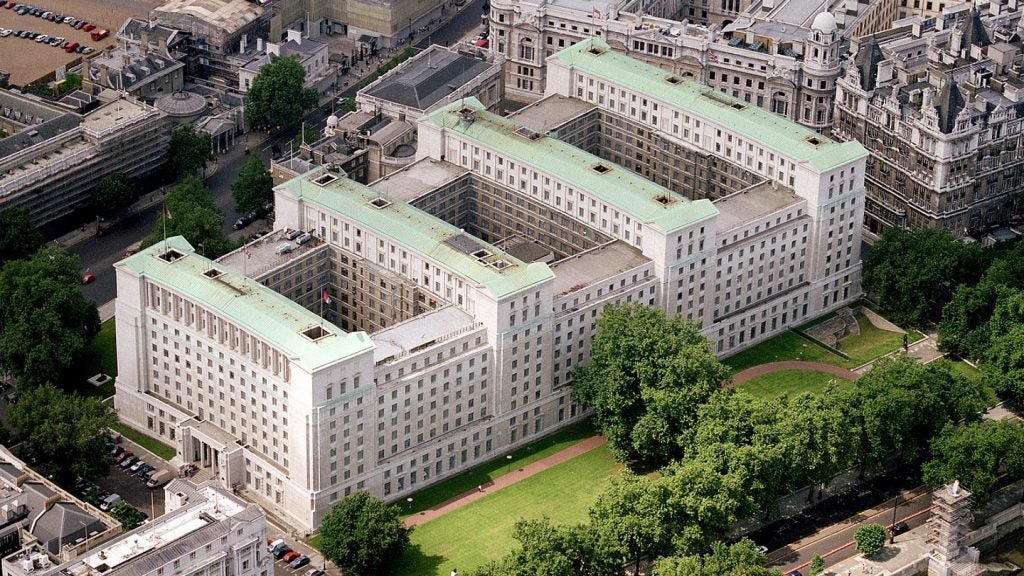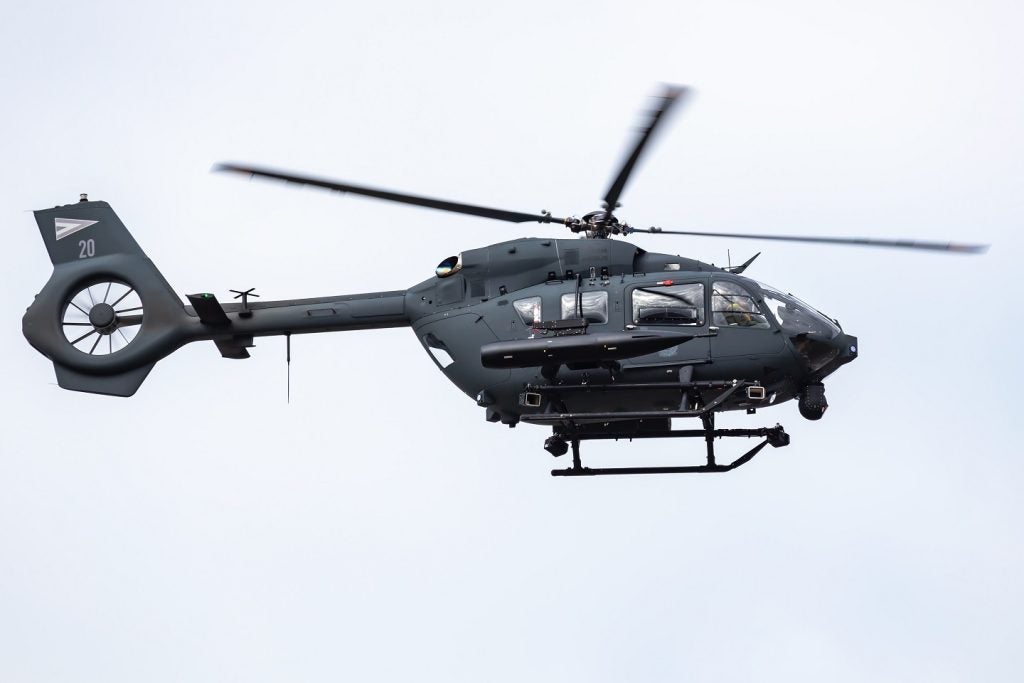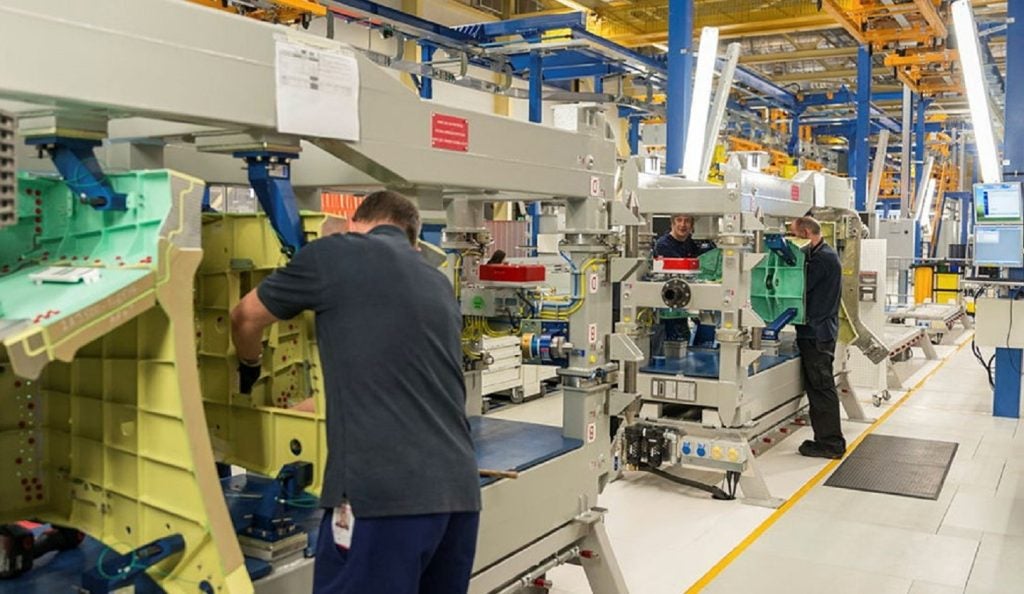
The UK Royal Air Force (RAF) showcased its SkyGuardian at RAF Waddington RAF on 9 September, with the Defence Secretary and Chief of Air Staff commenting on the capabilities and importance of the programme.
The airbase has been selected as the home of the Protector International Training Centre, as part of a £94m investment in infrastructure improvements to accommodate the planned arrival of the aircraft in 2024. The facility will include a synthetic training system for the aircraft, enabling RAF and international partners to conduct a substantial part of their training in a secure environment.
The programme follows the UK Minister of Defence procurement Jeremy Quin announcement of the £194m contract with General Atomics-Aeronautical Systems to acquire 13 SkyGuardian aircraft in July 2021 as an addition to the first three ordered last Summer. A total of 16 aircraft will more than double the capability of the Reaper MQ-9, the predecessor of SkyGuardian.
The aircraft, which will be known as Protector when enters service with the UK, will be able to conduct flights up to 40 hours. The Protector, unlike the Reaper, can fly in unsegregated airspace safely due to its advanced detect and avoid technology. This allows the RAF to deploy its surveillance and precision strike capabilities anywhere around the world.
Chief of the Air Staff Air Chief Marshal Sir Mike Wigston said: “That’s where the utility of the Protector is a giant step forward from some of the equipment we’ve got in service at the moment because it gives us that choice to operate on large parts of the world.
“And the performance of the aircraft, the amount of time it can stay airborne, the payload, the different options mean that it’s certainly something that we would be offering to anywhere where we saw violent extremism posing a threat to the UK.”
How well do you really know your competitors?
Access the most comprehensive Company Profiles on the market, powered by GlobalData. Save hours of research. Gain competitive edge.

Thank you!
Your download email will arrive shortly
Not ready to buy yet? Download a free sample
We are confident about the unique quality of our Company Profiles. However, we want you to make the most beneficial decision for your business, so we offer a free sample that you can download by submitting the below form
By GlobalDataWigston gave assurance that the programme is on track and has “absolute confidence” that it will remain on track until the point where the aircraft is operational in 2024.
When asked about the type of potential missions the Protector will undertake, UK Secretary of State for Defence Ben Wallace said: “In a UK environment, I could see it covering maritime issues that we currently use planes to do with people on it, like the P-9 [Poseidon], currently do lots of that. So, we can do lots of maritime awareness, I would see it potentially if there was an oil slick or something. That’s the type of thing that gives you that persistence, that I think the rest of the UK Government has as a capability.”
Wallace added: “I see this [Protector] as being one of the options to deploy anywhere in the world where there is an imminent threat to life, British life or allies where international law enables us to take action.”
The Protector has a wingspan of 24 m and can stay in the air twice as long as the Reaper’s 20 hours endurance. The main difference between the two remotely-piloted aircraft is the Protector’s ability to fly in unsegregated airspaces due to its detect and avoid (DAA) and due regard radar (DRR) systems. This enables the UK government to engage faster without the long logistical tails and clearance and to launch missions from Waddington.

Wallace said: “It’s got more sensors than probably most fighter aircraft or aircraft you’ll see in the airspace today.”
According to Wigston, the prototype showcased at RAF Waddington serves to purpose of ensuring that the aircraft fits into the UK and international airspace but is very close to a final product.
The weapons planned for integration into the system are the Brimstone 3 air-to-surface missile and the Paveway IV laser-guided bomb.
“We use ranges around the world. Dominantly in the US for long-range precision weapons, but we’ve also got ranges up in the far north of Scotland. So, there’s a number of choices but no different to any other weapons integration programme,” Wigston said.
The UK Ministry of Defence’ recent Integrated Review places a significant emphasis on multi-domain integration.
Asked whether Protector will fulfil the requirement of integrated response to future threats, Wallace said: “Definitely one of the key planks. The modern battle is all about nodes and connecting those nodes and connecting sensors. For this to work, the challenge to the RAF and StratCom (US Strategic Command) is I want this to help the soldier on the ground as well as the strategic headquarters.
“Because the new battlefield is about everyone has a sensor and everyone should be able to harvest the benefit of the full battle picture, because I think the future challenge in the battlespace domain is, at the moment, if you can be found, you can probably be killed and that is a really big challenge.”
Later this month the Protector will participate in Joint Warrior, a multi-national large-scale military exercise.
The programme director for the introduction to service of the Protector Shaun Gee said: “It will fit into providing that maritime recognised picture and being able to share that across kind of forces of partners, basically doing maritime intelligence, surveillance and reconnaissance and just being another asset, but a next generational asset in that whole game.”





